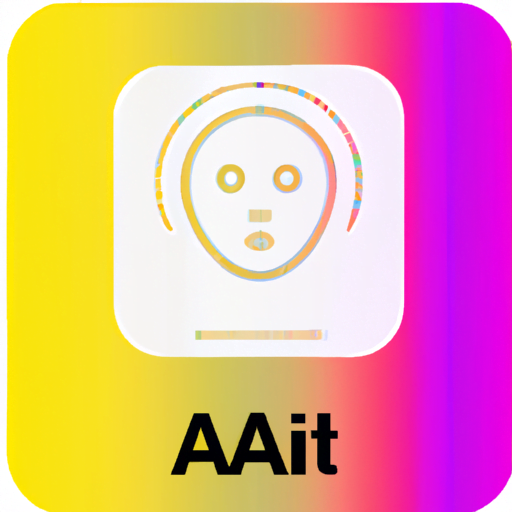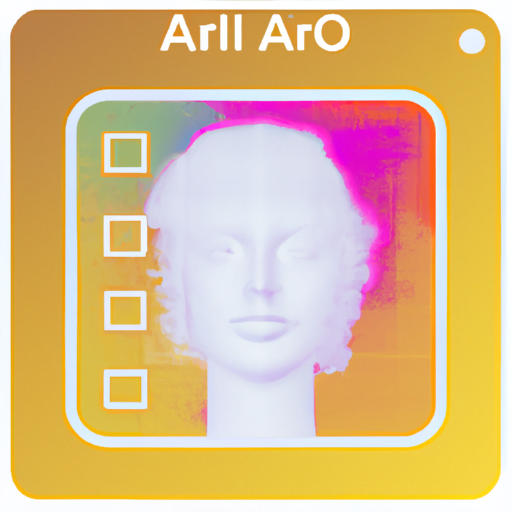
-
Table of Contents
- AI in Icon Design: From App Icons to User Interfaces
- The Role of Icons in User Interfaces
- The Rise of AI in Icon Design
- 1. Automated Icon Generation
- 2. Icon Style Transfer
- 3. Icon Customization
- The Benefits of AI in Icon Design
- 1. Time and Cost Savings
- 2. Consistency and Scalability
- 3. Enhanced User Experience
- Challenges and Limitations
- 1. Lack of Creativity
- 2. Subjectivity and User Preferences
- 3. Ethical Considerations
- Conclusion
AI in Icon Design: From App Icons to User Interfaces

Artificial Intelligence (AI) has revolutionized various industries, from healthcare to finance. One area where AI is making significant strides is in icon design. Icons play a crucial role in user interfaces, serving as visual cues that help users navigate through applications and websites. With the help of AI, designers can create more engaging and user-friendly icons that enhance the overall user experience. In this article, we will explore the impact of AI on icon design, from app icons to user interfaces, and delve into the benefits and challenges associated with this emerging technology.
The Role of Icons in User Interfaces
Icons are an essential component of user interfaces, serving as visual representations of actions, objects, or concepts. They provide users with a quick and intuitive way to interact with digital products. Well-designed icons can enhance the usability of an application or website by improving navigation, reducing cognitive load, and increasing user engagement.
Traditionally, icon design has been a manual and time-consuming process. Designers would create icons from scratch using graphic design software, often requiring extensive iterations and revisions. However, with the advent of AI, this process has become more efficient and streamlined.
The Rise of AI in Icon Design
AI has brought significant advancements to the field of icon design, enabling designers to create icons more quickly and effectively. Here are some ways in which AI is transforming icon design:
1. Automated Icon Generation
AI algorithms can generate icons automatically based on predefined parameters and design guidelines. By inputting specific requirements such as style, color palette, and subject matter, designers can obtain a set of icons tailored to their needs. This automation saves time and effort, allowing designers to focus on other aspects of the user interface.
For example, Iconfinder, a popular icon marketplace, uses AI to generate icons based on user preferences. Their AI-powered tool, Iconfinder AI, analyzes user feedback and behavior to create personalized icon recommendations. This not only improves the user experience but also helps designers discover new icon styles and trends.
2. Icon Style Transfer
AI can also facilitate style transfer in icon design. Style transfer involves applying the visual characteristics of one icon to another, creating a new icon with a different subject matter but a similar style. This technique allows designers to maintain consistency in their icon sets while exploring different themes or concepts.
For instance, NVIDIA’s GauGAN AI tool can transform rough sketches into detailed and realistic icons by transferring the style of existing icons. This enables designers to experiment with various styles and create unique icons that align with their brand or design vision.
3. Icon Customization
AI-powered tools enable users to customize icons according to their preferences. These tools leverage machine learning algorithms to analyze user input and generate personalized icon variations. Users can adjust parameters such as color, shape, and size to create icons that align with their brand identity or design requirements.
One notable example is Iconscout’s AI-powered icon editor, which allows users to modify existing icons by changing colors, shapes, and other attributes. This customization feature empowers designers to create unique icons without starting from scratch, saving time and effort.
The Benefits of AI in Icon Design
The integration of AI in icon design offers several benefits for designers and users alike:
1. Time and Cost Savings
AI-powered icon generation and customization tools significantly reduce the time and effort required to create icons. Designers can generate a wide range of icons in a fraction of the time it would take to create them manually. This efficiency translates into cost savings for businesses and allows designers to focus on other critical design tasks.
2. Consistency and Scalability
AI algorithms ensure consistency in icon design by adhering to predefined guidelines and style parameters. This consistency is crucial for maintaining a cohesive user interface and brand identity. Additionally, AI-powered tools can generate icons at scale, making it easier to create large icon sets or adapt icons for different screen sizes and resolutions.
3. Enhanced User Experience
Well-designed icons contribute to a positive user experience by improving navigation and reducing cognitive load. AI-powered icon design tools enable designers to create icons that are more visually appealing, intuitive, and engaging. This, in turn, enhances the overall usability and satisfaction of users interacting with digital products.
Challenges and Limitations
While AI brings numerous benefits to icon design, there are also challenges and limitations to consider:
1. Lack of Creativity
AI algorithms excel at generating icons based on predefined parameters and existing designs. However, they may struggle to produce truly innovative and creative icons that push the boundaries of design. Human creativity and intuition are still essential for designing icons that stand out and evoke emotions.
2. Subjectivity and User Preferences
Icon design is subjective, and user preferences can vary widely. AI algorithms may not always capture the nuances of individual design preferences, leading to icons that do not resonate with users. Balancing AI-generated icons with human input and feedback is crucial to ensure the final designs meet user expectations.
3. Ethical Considerations
As AI becomes more prevalent in icon design, ethical considerations arise. AI algorithms learn from existing data, which may contain biases or stereotypes. Designers must be mindful of these biases and ensure that AI-generated icons do not perpetuate harmful stereotypes or exclude certain user groups.
Conclusion
AI is transforming the field of icon design, offering designers new tools and techniques to create engaging and user-friendly icons. From automated icon generation to style transfer and customization, AI-powered tools streamline the design process, saving time and effort. The benefits of AI in icon design include time and cost savings, consistency, scalability, and enhanced user experience. However, challenges such as lack of creativity, subjectivity, and ethical considerations must be addressed to fully harness the potential of AI in icon design. By combining the strengths of AI algorithms with human creativity and empathy, designers can create icons that captivate users and elevate the overall user experience.
